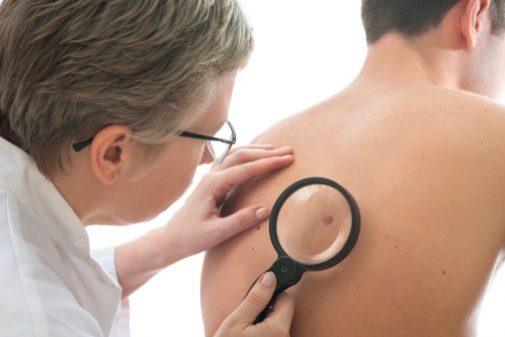Skin cancer: Sun exposure is just one piece of the puzzle

During the sultry dog days of summer, many people like to spend as much time as possible, outside whether on the golf course, boating on the lake or grilling with friends. Unfortunately, all of that fun in the sun can increase your risk of developing skin cancer. But sun exposure is only one piece of the puzzle.
A recent study, published in Biology of Sex Differences, suggests men’s physical characteristics and genetics may actually put them at a higher risk of developing melanoma. This is due to their tendency to have lighter skin pigmentation, which leads to a poorer reaction to the detrimental effects of ultraviolet rays. In addition, the female hormone estrogen is a protective factor from skin cancer. Naturally, men have a much lower level of estrogen than women.
Skin cancer is the most common cancer in the US. In fact, more than 8,600 men will die this year from melanoma, according to the Skin Cancer Foundation. In addition, men over the age of 50 are twice as likely as women to develop and die from skin cancer. Men are twice as likely to develop basal and squamous cell skin cancers, as well.
The Genetics of Skin Cancer and Human Pigmentation research group studied the differences between men and women’s response to the sun through 384 genetic variants and six physical characteristics. They took into account study participants’ color of their eyes, hair and skin, along with their sunburn history and presence of irregular moles and freckles caused by sun exposure. More than half of the 1,058 study participants were melanoma patients.
“The results show that, with the same genetic variability, men tend to have lighter skin pigmentation and a worse response to the effects of ultraviolet rays,” said researcher Conrado Martinez-Cadenas in a press release.
According to the researchers, skin cancer is determined by both environmental factors, such as sun exposure, and genetic factors. For example, people with light skin or eyes and blonde or red hair have a 20 to 30 times greater risk of developing skin cancer than darker skinned people who tend to tan easily.
In addition, estrogen may enhance sun protection in women, according to researcher Barbara Hernando, co-author of the study. Several studies have shown that female hormones promote the production of melanin, the pigment that protects the skin from the sun.
“Estrogen could be the reason why women have a darker skin tone, even when the genotypes of both sexes are the same, meaning that their risk of skin cancer is lower. So much so that skin cancer is much more prevalent in men,” Hernando said.
Dr. Rania Agha, a dermatologist at Adv0cate Good Samaritan Hospital in Downers Grove, Ill., suggests skin cancer education and proper sun protection can help lower everyone’s risk.
“It’s important to check your entire body on an annual basis for changes to the skin,” says Dr. Agha. “A mole and melanoma can develop in overlooked and hidden places such as in between toes, behind knees, the palm of your feet and even on your scalp. If you notice a new mole, get it checked out right away.”
According to the American Cancer Society, look for the following signs and symptoms of skin cancer:
- Any change to the skin, especially the size or color of a mole, growth, or spot
- Scaliness, roughness, oozing, bleeding or a change in the way the skin looks
- A sore that doesn’t heal
- The spread of pigmentation or color beyond its border, such as dark coloring that spreads past the edge of a mole or mark
- A change in sensation such as itchiness, tenderness or pain
To better identify possible cancerous moles, follow this warning sign checklist.
Related Posts
Comments
About the Author
Johnna Kelly, healthe news contributor, is a manager of public affairs and marketing at Advocate Christ Medical Center in Oak Lawn. She is a former newspaper reporter and spent nearly 10 years as a public relations professional working for state and county government. During her time as a communications staffer for the Illinois General Assembly, she was integral in drafting and passing legislation creating Andrea's Law, the nation's first murderer registry. In her spare time, she volunteers at a local homeless shelter, enjoys traveling, photography and watching the Chicago Bulls.

















